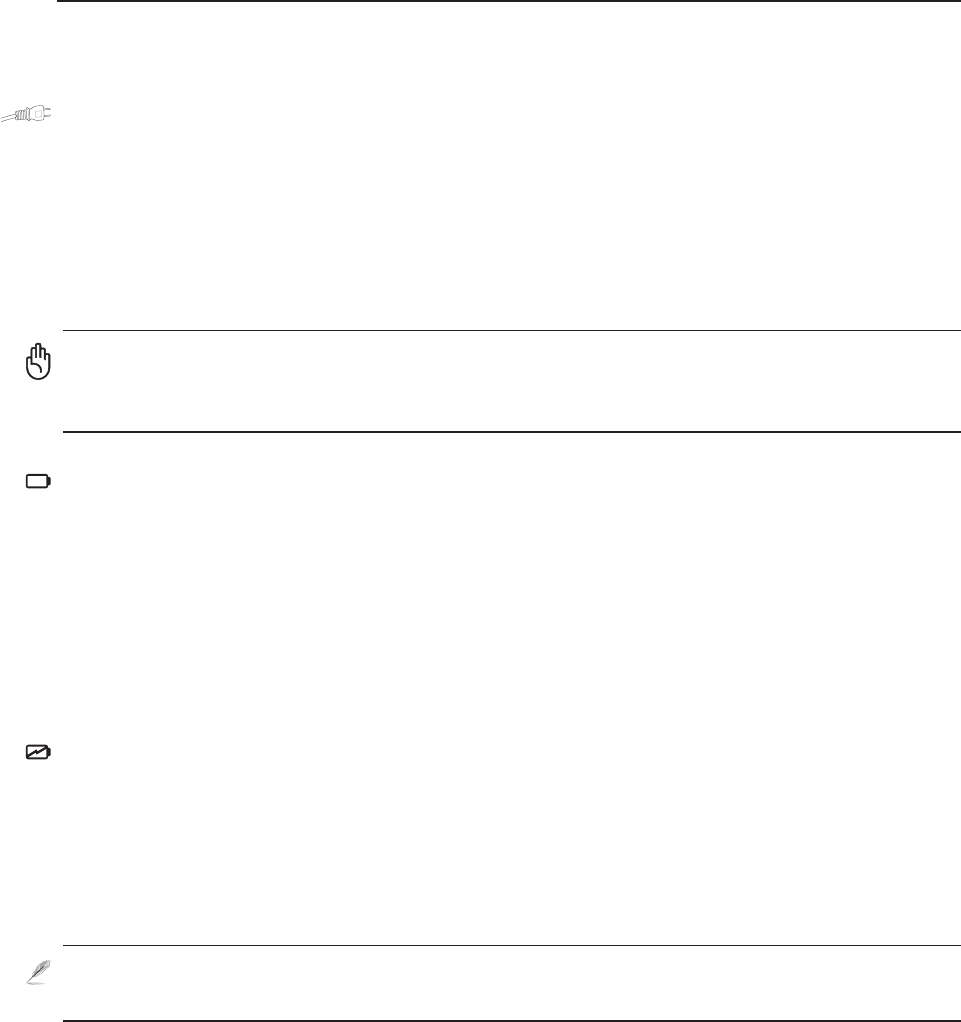
54
4 Using the Notebook PC
Power System
AC Power System
The Notebook PC power is comprised of two parts, the power adapter and the battery power system.
The power adapter converts AC power from a wall outlet to the DC power required by the Notebook
PC. The battery pack consists of a set of battery cells housed together. The AC Adapter’s primary
function is to provide power to the Notebook PC which also charges the battery pack. When the power
adapter is connected to the Notebook PC, it provides power to the Notebook PC and charges the inter-
nal battery at the same time as long as it is plugged into an electrical outlet.
Battery Power System
The Notebook PC is designed to work with a removable battery pack. A fully charged pack will provide
several hours of battery life, which can be further extended by using power management features through
the BIOS setup. The battery system implements the Smart Battery standard under the Windows envi-
ronment, which allows the battery to accurately report the amount of charge percentage left in the
battery. Additional battery packs are optional and can be purchased separately through a Notebook PC
retailer. Before using the Notebook PC on battery power for the first time, check the battery icon in the
Windows task bar to make sure that the battery is fully charged. Charging the battery takes a few hours
when the Notebook PC is powered OFF.
Charging the Battery Pack
You can charge the battery pack by using the power adapter. When the power adapter is plugged in, the
inserted battery pack automatically recharges whether your Notebook PC is ON or OFF. It takes a few
hours to receive a full charge when the power is OFF but takes twice as long when the Notebook PC is
in use. The battery is charging when the orange LED is solid. When the LED is OFF, the battery pack is
charged.
IMPORTANT! To protect your Notebook PC from damage, use only the power adapter
that came with this Notebook PC because each power adapter has its own power
output ratings.
NOTE: The battery stops charging if the temperature is too high or the battery voltage
is too high. BIOS provides a smart battery refreshing function.


















